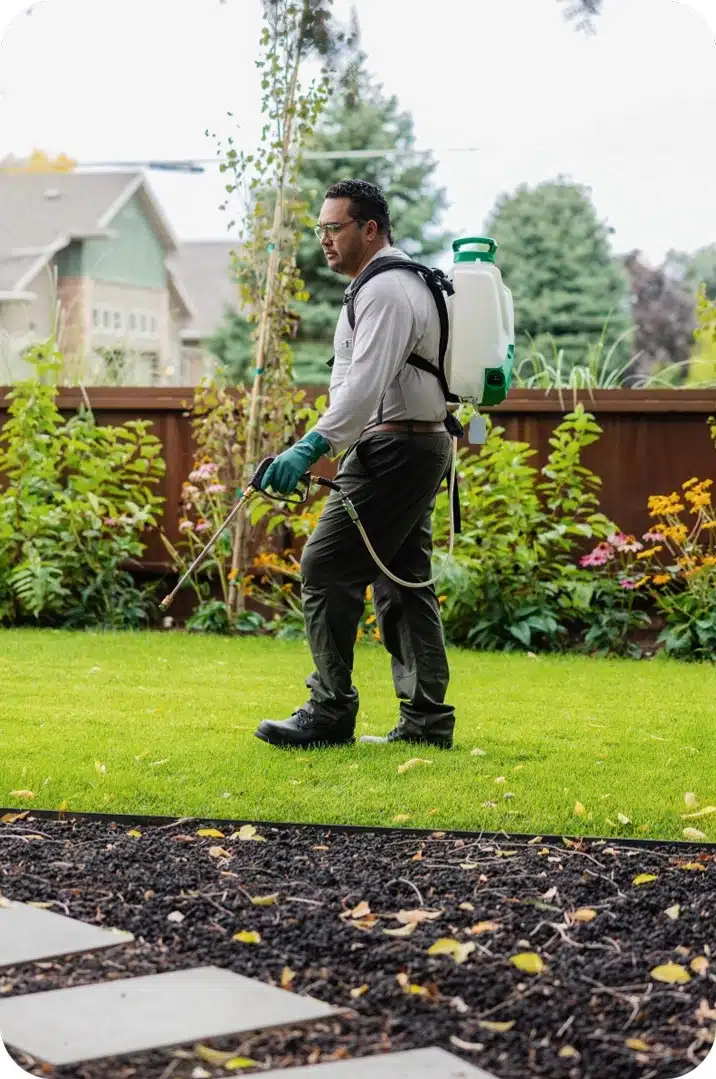Bed Bug Therapy Breakdown: Contrasting Chemical Vs. Non-Chemical Solutions
In the world of bug control, especially when taking care of the persistent issue of bed insects, the selection between chemical and non-chemical therapy options can be a crucial one. Both approaches use distinctive benefits and disadvantages, influencing aspects such as performance, safety and security considerations, and total expense. By analyzing the nuanced details of each technique, a more clear understanding of which course to pursue in dealing with a bed bug invasion can be acquired.
Efficiency of Chemical Treatments
Chemical treatments for bed bug invasions have been commonly recognized for their fast and powerful efficacy in eliminating these bugs. When considering the effectiveness of chemical treatments, it is vital to understand that they can give a extensive and quick solution to a bed insect problem. Professional pest control specialists typically count on insecticides to target bed bugs at various phases of their life process, consisting of fairies, adults, and eggs. These chemicals generally work by interrupting the bed pests' nervous system, leading to paralysis and eventual death.
Furthermore, chemical therapies have the benefit of supplying recurring effects, indicating that they can continue to get rid of bed bugs even after the first application. This residual activity is specifically valuable in combating any type of possible re-infestations. Furthermore, the quick action of chemical treatments can bring alleviation to individuals dealing with extreme bed bug invasions, allowing them to restore control of their space rapidly.
Safety Interest In Chemical Solutions
When using chemical solutions for bed pest treatment is guaranteeing the security of passengers and the environment,One crucial aspect that needs careful consideration. While chemical therapies can be efficient in getting rid of bed pests, they might pose risks if not dealt with effectively. One of the key safety worry about chemical remedies is the possible harm they can cause to human wellness. Exposure to particular chemicals utilized in bed pest therapies can lead to respiratory system problems, skin irritation, or other unfavorable reactions, especially in individuals with pre-existing problems or sensitivities. In addition, improper application or dosage of chemical pesticides can cause poisonous residues sticking around in the cured location, presenting long-term health threats to passengers.
Furthermore, the ecological effect of chemical options is an additional substantial factor to consider. Some pesticides made use of in bed bug therapies might be damaging to beneficial pests, wildlife, and ecological communities if they leach into the dirt or water systems. It is necessary to use chemical treatments carefully, adhering to safety and security guidelines, and thinking about much less hazardous choices to minimize these risks and guarantee the reliable and safe monitoring of bed insect invasions.
Advantages of Non-Chemical Approaches
Considering the possible security issues and ecological effect associated with chemical remedies for bed insect therapy, discovering non-chemical methods provides an encouraging option with several distinctive advantages. Non-chemical treatments are ecologically friendly, as they do not add to air or water contamination, making them a lasting choice for parasite control.
Furthermore, non-chemical solutions can be reliable in targeting bed pests, consisting of hard-to-reach areas where chemical therapies may not pass through. Techniques such as warmth treatment, vacuuming, vapor cleaning, and cushion encasements click here now provide comprehensive eradication without using hazardous chemicals. Moreover, non-chemical strategies can be less turbulent, needing minimal preparation and permitting quicker reentry right into dealt with locations. On the whole, choosing non-chemical bed insect treatment techniques not just prioritizes security and ecological defense but additionally ensures comprehensive and reliable parasite control.
Limitations of Non-Chemical Treatments

Additionally, non-chemical treatments usually require multiple applications to attain effective removal. This can be time-consuming and may not constantly guarantee total removal of all bed bugs and their eggs, particularly in surprise or hard-to-reach places.
Moreover, the success of non-chemical treatments greatly relies upon correct application and thoroughness, which can be challenging for people without expert experience. Inadequate application of non-chemical approaches may cause insufficient removal, resulting in relentless infestations and the need for added treatments.
Therefore, while non-chemical therapies have their benefits, it is important to recognize these constraints and consider them pest arrest when identifying one of the most reliable technique for taking care of bed insect infestations.
Expense Comparison: Chemical Vs. Non-Chemical Options
Offered the restrictions linked with non-chemical treatments, an important facet to assess in the context of bed pest management is the cost comparison between chemical and non-chemical choices. In contrast, non-chemical treatments like warm therapy or steam can be much more costly, with prices ranging from $1,000 to $6,000 for an entire home. While the initial cost of chemical treatments might appear lower, numerous therapies might be needed to fully eradicate the invasion, possibly boosting the total price.
Verdict

Thinking about the potential security concerns and environmental effect linked with chemical solutions for bed insect therapy, discovering non-chemical methods provides an encouraging choice with several unique advantages.Provided the limitations associated with non-chemical treatments, an essential aspect to review in the context of bed bug management is the expense contrast between chemical and non-chemical options. In contrast, non-chemical treatments like warm treatment or steam can be extra pricey, with costs varying from $1,000 to $6,000 for an entire home. While the initial cost of chemical treatments may seem lower, numerous treatments may be required to fully eliminate the invasion, potentially enhancing the get redirected here general expense.In final thought, when comparing chemical and non-chemical bed insect therapy options, it is crucial to take into consideration effectiveness, safety and security, advantages, restrictions, and cost.